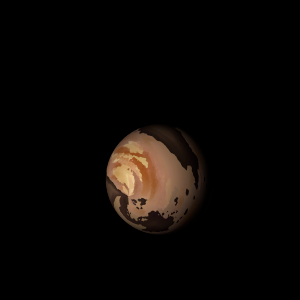|
|
Space Astro
|
Info for exoplanet "Disur"
| Scientific (actual) data |
|---|
| Name | Kepler-961 b |
| Planet status | Confirmed |
| Radius | 0.227 |
| Orbital period | 16.8773 |
| Discovered | 2016 |
| Updated | 2021-02-05 |
| Tconj | 2454970 |
| Publication | Announced on a website |
| Detection type | Primary Transit |
| Alternate names | 2MASS J18480851+4337525 b, K01818.01, KIC 7870032 b, KOI-1818 b, KOI-1818.01, WISE J184808.51+433752.5 b |
| Star name | Kepler-961 |
| Right ascension | 282.04° |
| Declination | 43.63° |
| Mag j | 12.859 |
| Mag h | 12.564 |
| Mag k | 12.482 |
| Star distance | 607 |
| Star metallicity | 0.05 |
| Star mass | 0.96 |
| Star radius | 0.9 |
| Star age | 2.82 |
| Star temperature | 5582 |
| Star alternate names | 2MASS J18480851+4337525, KIC 7870032, KOI-1818, WISE J184808.51+433752.5 |
| Wikipedia article | Kepler-961 b |
Back
| |
| Fictional info (?) |
|---|
| Suggested name | Disur |
| Planet type | Cold planet |
| It is a cold planet planet with a mass one-thousandth that of Kepler-961, but two-and-a-half times that of all the other planets in its solar system combined.
The volume of water ice in the south polar ice cap, if melted, would be sufficient to cover the entire planetary surface to a depth of 7 meters.
Because of its fast rotation, the planet's shape is that of an oblate spheroid (it has a slight but noticeable bulge around the equator).
Its north and south poles, therefore, lie where most other planets have their equators. |
| Atmosphere | Hydrogen | 45% |
| Ethane | 42% |
| Neon | 11% |
| Methane | 0.73% |
| Nitrogen | 0.083% |
| Hydrogen peroxide | 0.005% |
| Molecular hydrogen | 0.0032% |
| Atmospheric pressure | 17 bar |
 |
| No known satellites |
| Google search for Disur |
|
Website by Joachim Michaelis
|
|
|
|